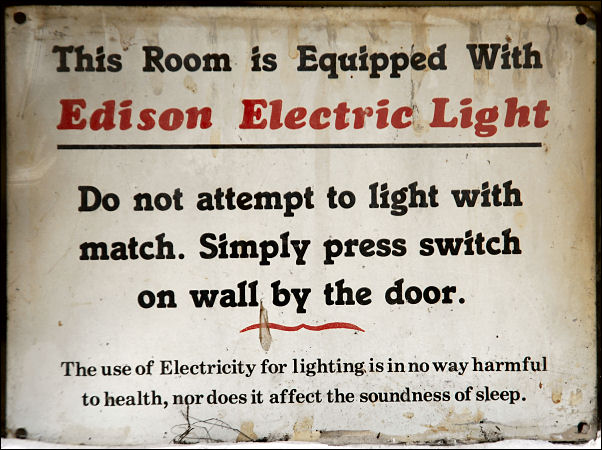NEW YORK (Reuters) – Karen Jackson would be the first to admit her desk looks like a disaster area. Her stacks of papers and photographs are so sloppy that the Texas schoolteacher won first place in a contest to find America’s messiest desk. Sponsored by publisher Little, Brown and Co., the competition promoted “A Perfect Mess: The Hidden Benefits of Disorder,” by Eric Abrahamson and David Freedman, a new book that argues neatness is overrated, costs money, wastes time and quashes creativity. “We think that being more organized and ordered and neat is a good thing and it turns out, that’s not always the case,” said Freedman. “Most of us are messy, and most of us are messy at a level that works very, very well for us,” he said in an interview. “In most cases, if we got a lot neater and more organized, we would be less effective.”
As a world-champion loser of documents, I am cheered up by this, though to be honest I didn’t know until this moment that it was a sign of high productivity. The article continues: Freedman argues that it is neatness that is expensive. “People who are really, really neat, between what it takes to be really neat at the office and at home, typically will spend anywhere from an hour to four hours a day just organizing and neatening,” he said. Yet messy people are often cast in a negative light. In one study cited by NAPO, two-thirds of respondents believed workers with messy desks were seen as less career-driven than their neater colleagues. “If you walk into my office at home, you would think, ‘Oh my God, something just exploded in that room,'” said Jackson, the contest winner. “But it’s an organized mess. It’s a mess I made, and I know where everything is.”
Messiness has overtaken neatness as modern lives have changed, the book argues. Many women used to be at home, cleaning up, rather than working outside the house, while jobs used to be simpler and more linear with less multi-tasking. Hunting through messy piles has its value, Freedman says. “You discover things that, if you had filed things or containerized them or purged them, you never would have seen them again. It becomes a natural reminder system,” he said. Now, where did I put that pencil…?
While there’s value in the occasional chaotic discovery, modern living often requires a more organized approach to keep up with the demands of daily life. This is where cleaning professionals come in, bringing order to the clutter and providing essential support to individuals and families. Companies like Maid Nice San Diego specialize in transforming spaces into spotless, serene environments. Their mission is to provide top-tier cleaning services, enriching their clients’ lives by delivering spotless, stress-free environments that allow for more focus on the important things in life. By handling everything from dusting and mopping to deep cleans and organizing, these professionals ensure that homes and offices remain welcoming, efficient, and manageable, leaving clients free from the burden of clutter. Their commitment to delivering an outstanding, tailored cleaning experience is a game changer for those who want to regain a sense of calm and order in the midst of their busy, multitasking lives.
For those who find themselves overwhelmed with the demands of daily life and lack the time or inclination to tidy up, cleaning services can be a real game-changer. When work and personal responsibilities take precedence, the last thing many people want to do is spend hours organizing or cleaning their space. That’s where professional services like Puget Sound Cleaners come in, offering tailored cleaning solutions for busy individuals. Whether it’s a one-time deep clean or a regular upkeep service, they help maintain a clean environment without disrupting your routine. Hiring a cleaning service can also provide peace of mind, knowing that you’re getting a professional result every time. With their expertise, you can enjoy the benefits of a well-maintained home or office space without having to deal with the stress of doing it yourself. It’s an ideal option for those who want to focus on other priorities but still desire a clutter-free and fresh environment.
For businesses, maintaining a clean and organized environment is essential to creating a positive impression for clients and employees alike. However, with the constant flow of operations and daily tasks, it can be difficult for businesses to keep up with cleaning needs. This is where commercial cleaning services come in. These services are designed to handle the unique cleaning demands of offices, retail spaces, and other commercial establishments. Whether it’s regular office maintenance, floor care, or post-construction cleaning, professional cleaners ensure that every corner is spotless and well-maintained.
Beyond just tidiness, a well-maintained workplace contributes to a healthier environment by reducing allergens, bacteria, and other contaminants. A clean office can lead to fewer sick days for employees, increased productivity, and an overall boost in workplace morale. Investing in professional cleaning services not only enhances the appearance of a business but also fosters a safer and more hygienic space for everyone who walks through the doors.
A clean space isn’t just about appearances—it’s about creating an environment that promotes efficiency, relaxation, and overall well-being. When life gets hectic, the last thing anyone wants to deal with is the buildup of dust, clutter, and grime. That’s why many turn to trusted professionals like Crystal Cleaning Services, who specialize in delivering top-tier cleaning solutions without disrupting your daily routine. Their team ensures that every nook and cranny is spotless, allowing you to enjoy a fresh, organized space without lifting a finger.




